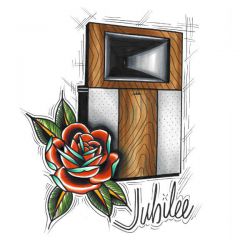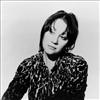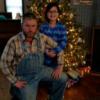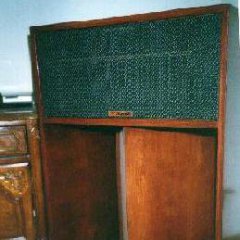Search the Community
Showing results for 'la scala al3'.
-
Hi all, trying to troubleshoot an issue that's been driving me nuts. I'm near the end of my rope and hoping to hear from anyone here who has used a Decware tube amp with either La Scala AL5s or Klipschorns to see if the problem is with something in my system, or simply just a bad pairing of speaker and amp. I have tried three different Decware tube amplifiers (two different SE84UFO25s, and the new SEWE300B) and have found that with all three of them, when paired with my La Scala AL5s, there is a loud 60 or 120 Hz (maybe both) hum. This hum is independent of gain/volume setting on the amplifiers, always the same volume. I measure this baseline hum at 59 dB in my listening chair using a handheld decibel meter (C weighted). To be clear, tube amps always have some small amount of hum in them, but this is very loud, and these are extremely highly regarded amps. I know this kind of thing is often caused by a ground loop. I think I have ruled ground loops out: the hum is the same regardless of whether or not anything is connected to the inputs on the amps. Even when the only thing connected to power in the room is the amp, and the amp is connected to the La Scalas, I get the same hum as when everything is plugged in and connected together. I have spoken to Steve Deckert about it and he very patiently listened and helped me troubleshoot. He thinks something is amiss, but I've checked all the standard causes. He suggested there's a possibility that the wiring/grounding in my home has something wrong with it. I had an electrician check it out today, and he said everything is good. I'm really totally stumped. The problem is common across three different amplifiers, so I think it's unlikely that they're all defective in exactly the same way, somehow, and the 300B amp is literally brand new. One suggestion Steve has offered, is that his amps always have some level of "inherent" hum to them, but he designs the amps such that for a 100 dB speaker, at listening position, the hum is inaudible or barely audible. He said there's a possibility that my La Scalas are so efficient that the hum is louder than one would want, but he did also say it shouldn't be this bad. For me, the hum is extremely audible. So, I'd like to ask if anyone here has had experience using a decware amp (one of the SE84UFO models, or even the new SEWE300B) on their La Scalas or Klipschorns, and experienced this same kind of unshakable hum? It would be really helpful to know if this is just a bad match of equipment, rather than something I can fix!!
-
HI all! I recently acquired these Klipsch La Scala loudspeakers built in the 80's ('88 possibly). They are in immaculate condition and are in their original shipping boxes. Unfortunately they have the original AL crossover, which I've read isn't ideal. That being said, I'm curious what the current/fair going rate is for these. I've read they could be worth between $1500-$3000 depending on the condition. Images here: https://imgur.com/a/EICP5qN
- 1 reply
-
- 1
-

-
I am looking for a pair of full or half grills for a pair of La Scala (1970's or 1980's vintage). I know this a big "shot in the dark"! Thanks in advance for your responses!
-
I recently acquired some 90s klipschorns. When I set them up ( I had it powered with an NAD C700), my current la scala's sounded a lot better than them. So I hooked them up to my monolith 7x200. Sound improved but the klipschorn still sounds like its trapped in the box. Turning up the volume definitely helps - it sounds better at high volumes. However, at these high volumes, there's a hissing sound coming from the midrange horn. You don't hear it from the front (obviously) but if you're behind the speaker, you can hear it. I also don't think there's any sound coming from the tweeters. How do I fix this? Should I be looking for replacement parts? Where do I find them? Totally noob. Any help would be appreciated. Thanks
-
La Scalas are doing living room duty and these don't fit with the aesthetic. Free to a good home. If you want to pay for packing and shipping, I'm game.
-
I have a UFO2.1 with level 2 anniversary mods and Heresy IV's. Obviously not as sensitive as La Scala's, but dead quiet for me. Small amount of transformer hum if I listen carefully right next to the amp, but nothing from the speaker. Even with my ear right up next to the speaker, I've got nothing.
-
The final day of the 2024 PWK Birthday Bash featured the latest Chief Bonehead Class given by Klipsch Chief Engineer Roy Delgado. The subject of this class was to introduce the changes coming in the next iterations of the La Scala and Klipschorn (presumably the AL6 and AK7 respectively). We got a tease of the changes at SubFest last fall, but during this class Roy finally revealed the details. Just remember that all of this information is preliminary and subject to change. The first change is the replacement of the K-401 midrange horn. The tooling for the K-401 is finally wearing out. Instead of making new tooling for that old exponential horn design, it was decided that it would finally be replaced with a modern modified Tractrix horn, designated the K-406. This new horn is much shorter and features a 2” throat and “mumps”. The horns in the pictures are prototypes in white plastic. The final version will be the usual black color. The next change is the midrange driver to go with this new horn. This will be the large diaphragm, 2” exit KT-1133-HP compression driver used in the Klipsch Professional line. An external wide dispersion phase plug will likely be added for use with this driver before production. The last change is the replacement of the passive crossover with an active DSP like the Jubilee. This now allows time/phase alignment of all drivers. This also allowed the response to be flattened out, especially the hump in the bass bin range, allowing response to be flat down to 45 Hz. I forgot to take a picture of the two curves, one with the passive network and one with the DSP, but the difference was night and day. The curve with the DSP looked ruler flat down to 45 Hz. However, this also means that the new La Scala and Klipschorn will now require three channels of amplification per speaker. The question was raised as to whether a passive crossover network option would be offered as some buyers might balk at buying three channels of amp power per speaker. Roy said this may be an option. However, a passive crossover network will not provide the time/phase alignment and perhaps not all the response corrections made possible by the DSP. I asked Roy why he didn’t replace the tweeter and midrange horns with a single K-510 horn mated to a Celestion Axi2050 driver and make these speakers two-way active. He said he didn’t do this for two reasons. One was that the K-510 is a 500 Hz horn and would not allow proper crossover to the Klipschorn bass bin which can’t get that high. The other reason was the desire to continue the tradition of providing “upgrade kits” to allow La Scala AL5 and Klipschorn AK6 owners the ability to upgrade their speakers to the latest revision. The K-406 will have the same mounting screw hole pattern as the K-401, allowing a swap with nothing more than a screwdriver. I told Roy I’ll be first in line for any upgrade kit for my La Scala AL5 surrounds. Edit: I forgot to mention, any upgrade kits that might be offered would only be for the La Scala AL5 and the Klipschorn AK6, since only those versions have the Celestion tweeter that will be carried over to the new versions. We then got to hear demos with the new La Scala. How did all these changes sound? In a word, astounding. The improvement is dramatic. The bottom end sounds fuller, the speaker sounds smoother, and better integrated. The hint of shoutiness from the K-401 is completely gone. The improvement is as dramatic as when I head the comparison of the Underground Jubilee and the Hertiage Jubilee. When Roy later paired the La Scala with the large (18 Hz) Hertiage subwoofer prototype, the sound was as close to the Heritage Jubilee sound as I’ve heard from any other Heritage speaker. These are not your grandfather’s La Scala. I imagine the improvement will be similarly dramatic with the Klipschorn as well. Roy has certainly worked his magic once again. Roy also mentioned that the La Scala and Klipschorn DSP units may have a subwoofer out for use with the Heritage horn subs. This was how the demo with the sub was done. I can’t wait for these new versions to be released.
- 71 replies
-
- 12
-

-

-
For sale is a pair of Crites CW1526C 15" woofers with cast frames. These have been used for the past ten years in a pair of home-brew Cornscalas, and they still sound wonderful. One of them has the dust cover pushed in but it functions just fine. I do not have the original boxes but they will be packed well for shipping. I am asking for $225 w/ free shipping to the Continental U.S.
-
Approximately four years old, pulled fully working from a franken-scala project I threw together and am now dismantling to pursue other things. Qty 4 drivers total, will sell in pairs and will be shipped with original OEM boxes/packaging. Currently selling from ESS for $250/each, I'm selling these for $375/pair, shipped and paypal'd in the conUS. Invented by the noted physicist and scientist, Dr. Oskar Heil, the ESS Heil Air Motion Transformer (AMT) tweeter uses a folded pleated Mylar diaphragm just 0.0005" thick. Its voice coil is a serpentine pattern of precision-etched aluminum, selected for minimal weight and high power handling. https://essspeakers.store/collections/heil-amt/products/original-great-ess-heil-air-motion-transformer™-i-large Unlike a normal piston loudspeaker that excites the air by alternately pushing and pulling a cone or dome, the Heil AMT Air Motion Transformer linearly squeezes and expands its diaphragm's pleats, moving the airload at a very high velocity. Because the moving mass of the Air Motion Transformer is extremely low and the magnetic structure very powerful, this combination results in extremely high acceleration that yields amazing transients. Weight: 14.5 pounds Height: 6″ Width: 6.75″ Depth: 4.25″ Impedance: 4 ohms, Re: 3.9 ohms Power: 40 Watts RMS, 160 Watts Max Response: 20 kHz - 800 Hz Sensitivity: 96 dB, 1 watt, 1 meter Fits ESS Cabinet and Driver Models: ESS: AMT-1. AMT1, AMT-1A, AMT-1B, and many more
-
Putting this out there. The tax man got me good this year. Very reluctant to sell but might be convinced to do so. https://nashville.craigslist.org/ele/d/murfreesboro-klipsch-la-scala/7739710539.html
-
Just got a pair of 85(?) La Scala Pros that have been sitting in a shed forever. Woofer works fine on one, but no sound from mid or tweeter. Woofer and mid fine on the other but no tweeter. The backs are sealed on these so I removed the screws and opened them up to take a peek at the crossovers - everything is amazingly clean, although the capacitors seem rusty. What’s the best process for me to follow to identify what’s wrong with these. Not afraid to learn new tools and such, but am a novice to these things. One photo of crossover attached here.
-
[Originally posted by GromLakeArea51 on Jan. 30, 2016 in "2 Channel Section. Moved here as many questions raised in the "Ask The Historian" Section are answered by this "Codex."] There has always been a considerable interest in the serial codes, options and the history of the original Heritage series (Klipschorn, LaScala, Belle, Cornwall and Heresy). As a reference source for the collectors, and those interested in the vintage Heritage "stuff", below is the V.4 that covers the Heritage series through ~2008. Note: Things have changed, new versions are brought to the consumer, in terms of cabinets, crossovers, horns, etc. It's the originals for which so many questions are asked! Along with many others with Klipsch and Heritage owners who contributed to the document, here is an up to date version which covers Heritage up through 2008. Attached also is a .pdf file for vintage Heritage owners (and those looking at the older versions) to print and keep as a reference source. ____________________________________________________________________________________________________ KLIPSCH HERITAGE SERIES HISTORICAL REFERENCE DATA (V.4 – 27 January 2016): SECTIONS: GENERAL READING HERITAGE MODEL & SERIAL LABEL CODES SPEAKER TYPE CODES SPEAKER WOOD/FINISH CODES SERIAL NUMBER CODES DRIVER CODES DRIVER TYPES BY APPLICATION (Part-2) GRILLS TYPES & CLOTH CODES (Part-2) LOGO DESIGNS (Part-2) HERITAGE PRODUCTION NOTES & TIME LINES (Part 2 I. GENERAL: 1. This information generally applies to the historical Klipsch Heritage Series; but also includes some selected information on finishes, grill cloth options and emblems/ logos used on certain later models. 2. The data is generally correct; the author assumes full responsibility for errors. 3. Sources include, but are not limited to: Discussions, data reviews, and corrections by Klipsch employees; Discussions and physical data provided by owners of Klipsch speakers; independent technicians and sources specializing in Klipsch; Klipsch forum threads (extensive source material is available); Klipsch reference documents, information sheets, data specs, time line sheets, etc. Direct examination of Heritage series products. Visits and discussion at the the factory in Hope, AR. 4. Corrections, additions, and in particular photographs, are most welcome, and as Klipsch owners and forum members contribute additional data, the document will be updated. II. READING THE KLIPSCH MODEL & SERIAL LABEL CODES: 1. All of the "labels" through 1990+ are functionally similar. The Heritage series until 1984 were relatively simple: they were hand written, and first line was the model and wood/finish type, and the second line was the serial number (serials discussed further below). 2. Starting in 1984 and continuing until approximately 1988, the labels were similar, however used a "stamped" serial number identification below the model & finish code. By 1988-1989, the labels were "computer" generated, with the model, finish and other coding in a second "line". EXAMPLE: KC-BB 15T252 This tag would be for a Klipschorn, Type-C (non-"collared"), birch, black lacquer finish, serial number: 15T252 (made in 1979) III. HERITAGE SPEAKER TYPE CODES: ** Does not include the "Rebel" or "Shorthorn" series. C = Cornwall CD = Cornwall "decorator" with flush motor board and no grill BK = Belle Klipsch H = Heresy HD = Heresy "decorator" with flush motor board and no grill LS = La Scala KB = Klipschorn - Model Type B, "collared" KC = Klipschorn - Model Type C, no "collar" KD = Klipschorn - designer type (no grill, made through April 1987) IV. HERITAGE SPEAKER WOOD/FINISH CODES: 1. Until the late 70's-early 80's (and again in 2008 on Heritage models), customers could special order a number of exotic veneers. 2. It should be noted that until May, 2001 there were almost 100 different finish, grill cloth, and riser 'combinations' or variants that could be ordered for the Heresy’s and up to 75 versions of the Klipschorn. 3. In the mid-late 90's, Klipsch generally ceased most special order veneers and raw birch was also discontinued on most models, except Heresy-II's. 4. Material for raw birch is/was Georgia-Pacific cabinet/furniture grade 7 ply (5 inner standard grade plies and the two outer very-fine grade plies). 5. Risers for the Heritage series were originally optional, and there was a long base for horizontal placement of standard Cornwall's. 6. Heresy risers were generally "straight" until the late 1980's, and were still an option until the late 90's. In the late 1980's the "slant" style became the general standard. Slant risers appeared in the 1970's on Heresy-Is, but are not seen often. Currently the US version Heresy is shipped with slant riser, elsewhere in the world they can be ordered with or without the riser. 7. "Oiled" finish refers to the factory application of a high quality furniture grade wood oil that fills the pores of the wood and seals the finish. The type of oil is similar to a Watco "danish" or "rejuvenating" oil. Oiled finishes require a routine "oiling" with a light non-buildup type of furniture grade wood oil. 8. "Lacquer" refers to the application of one or two thin coats of a clear semi-gloss lacquer sprayed on the cabinet and motor board prior to installation of drivers. That lacquer was obtained from various vendors, and as of 2013, is a #40 sheen, semi-gloss lacquer from Valspar/OPEC. Lacquer finishes only require a routine wiping off with a clean dry cloth to maintain the finish. 9. For "Black Lacquer" finishes, the factory used a flat black lacquer primer, then #40 sheen black lacquer, with a clear #40 sheen to protect the black finish. 10. Generally, most veneered Heritage products had the rear panels/ sections sprayed with black lacquer primer. Starting in late 1983 and continuing to this day, the rear panels of the Heritage models are now sprayed with a coat of "textured" semi gloss, and a top coat of semi-gloss black. 11. An option to have raw birch stained was also used, but not often seen. The stain was usually applied by spraying, and the serial number stickers generally indicated this option. Example: H-WS would have been a Walnut stained Heresy made from "raw-birch". This option was more commonly seen on La Scala's. CODE ** WOOD FINISH REMARKS AL Ash Lacquer Uncommon AO Ash Oiled Uncommon BB Birch Black Lacquer Common BR Birch Raw Common BL Birch Lacquer Common BW Birch White Lacquer Rare Spec Order CL Cherry Lacquer Uncommon ** CO Cherry Oiled Uncommon D-BR Birch Raw Designer (No Grill) D-BB Birch Black Lacquer Designer (No Grill) FL Fir Lacquer Rare FO Fir Oiled Rare FB Fir Black Lacquer Late Models Only F Fir Firzite Rare - Marine Grade HL Hickory Lacquer (reported-unconfirmed) MEL Macassar Ebony Lacquer Rare Spec Order MEO Macassar Ebony Oiled (unconfirmed) MHL Mahogany Lacquer Rare Spec Order MHO Mahogany Oiled Rare Spec Order MHR Mahogany Raw Rare Spec Order ML Maple Lacquer Rare"Hardrock Maple" MO Maple Oiled Rare"Hardrock Maple" MO* Medium Oak Oiled Late 90's Models OL Oak Lacquer Common (Red Oak) OL Oak Oiled Common (Red Oak) PNL* Persian Nut Lacquer Rare Spec Order RRL* Rambling Rose Lacquer Rare Spec Order PL Prima Vera Lacquer Rare Spec Order PR Prima Vera Raw Rare -Early RL Rosewood Lacquer Brazilian species RO Rosewood Oiled Brazilian species TL Teak Lacquer Uncommon TO Teak Oiled Uncommon WL Walnut Lacquer Common WO Walnut Oiled Common WS Birch (stained) Stain Walnut on Birch ZL Zebrawood Lacquer Rare Spec Order ZO Zebrawood Oiled Rare Spec Order * "Persian Nut" and "Rambling Rose" are not an actual wood species; they were made from linear cut birch or walnut wood which was dyed with specific hues/colors, re-glued into alternating color layers and then rotary cut into the respective veneer types to achieve the effect. ** Lacquer finish on early production Cherry was uncommon. V. HERITAGE SERIAL NUMBERS: 1. Based upon additional information related to the use of letters starting in 1955, the 1962-1983 coding has been modified to reflect that information. 2. The serial number was written on the paper serial tags and die stamped on the back edge of the top panel (inside top portion in LS). This practice was not used on later "MDF" cabinets for Heresy's, etc. Serial numbers can often be found written in pencil on the inside of some of the Heritage series, most notably Klipschorn's and Belle's. 3. While the 1946-1961 manufacturing dates can only be found in the Engineering Library in Indianapolis, accurate specific dates for the day of manufacture may also be found by close examination of the interior of the speaker cabinets. As an example there were often small inspection tags stapled inside the cabinets and penciled notations with dates inside the cabinets. An example of the production inspection stickers was the use of "PRIDE" stickers inside some models. These were used in the early through mid-1980's. 4. Additional letters stamped in the edges of Heritage series made from birch plywood, and on the poplar and ash "lumber core" as the substrate, were "USA" and/or the cabinet builder's and final sander's initial(s). For reasons of protecting their right to privacy, I have not identified the names of those superb craftsmen (and women). DATES DESCRIPTION EXAMPLE 1946-1947 ### 001-020 (ending at #20) 1946 & 1947 Klipschorn serials #002 - #013 were made by Baldwin. Serial numbers #14-20 were made for purchasers in a local cabinet shop before the move to the first factory (now museum). There are no Klipschorn's with a serial number between 21 and 120. DATES DESCRIPTION EXAMPLE 1948-1961 #### (starting #0121) From 1948 though 1961, Klipschorn's had the serial number stamped into the tailboard, woofer access door, or inside the woofer chamber. The number of Klipschorns produced and shipped in 1948 and 1949 is not clearly recorded in the early logbook. In 1948, 24 serial numbers were recorded (#121 - #144). Fourteen were clearly shipped in 1948, 1 was shipped in 1949, and 1 in 1950. Eight do not have a clear record of being shipped. In 1949, 32 serial numbers were recorded (#145 - #176). Of these, 27 were shipped in 1949 (plus the 1948 unit), and 5 have no clear record of shipping. DATES DESCRIPTION EXAMPLE 1955-1983 ##letter#### 20Y1234 Letters that look like numbers (e.g. I, O, Q, V) were not used. "S" is frequently misread as a "5" and Y has been confused with an X on occasion. July 29, 1955 was the last day for the four digit serials (i.e. 1811). After that the "number- letter-serial" system went into effect (2 August 1955). The first "number-letter-serial" speaker was produced on the 2nd of August 1955; that serial number was 1A812. In the 1955-1983 serial method the first, or prefix "digit(s)" before the year letter represents the sequence of production for each 1000 units. The suffix digits after the letter code will always be three digits - 001 through 999. For example 1C999 would be the 999th unit built, and 2C999 would be the 1999th built in 1965 C = 1965). These digits before & after the year code apply only to that type of speaker. The year code letter only identifies the year in which that number occurred. As an example, if you have a pair of Klipschorn's and one of the serial numbers is 15T252, then by 1979 there had been 14,151 Klipschorn's made (Klipschorn's made in 1946-1947 were serial numbered from 1 to 20, and in 1948 started with #121, skipping #21 through #120). For a pair of 1979 La Scala's, with serial number 22T403, it means there were 21,403 La Scala's made to that point. Another example: A pair of Belles from 1979 has the serial number 3T242 and 243. This means that in 1979 these Klipsch Belles, the 2,242nd & 2,243rd, were made. YEAR OF MANUFACTURE (1955 THROUGH 1983 ONLY) A = 1955-63* F = 1968 L = 1973 S = 1978 B = 1963-64* G = 1969 M = 1974 T = 1979 C = 1965 H = 1970 N = 1975 U = 1980 D = 1966 J = 1971 P = 1976 W = 1981 E = 1967 K = 1972 R = 1977 X = 1982 Y = 1983 * Cornwall's & La Scala's used "A" 1963 and "B" for 1964; the first Cornwall to use a letter code was 3A09, shipped in August of 1963. DATES DESCRIPTION EXAMPLE 1984-1989 YYWW#### 89261234 YY = year (e.g. 89 = 1989) WW = week of the year (e.g. 26= last week in June) The WW can also be a single digit for weeks 01 through 09; e.g. 877#### (mid February 1987) In the early-mid 80's (generally starting in 1984), Klipschorn's had two serial numbers assigned to each speaker; one for the bass bin and one for the top section. The bass bin had an "L/F" at the end of the "type code" (see further below) and the top section had an "H/F" at the end of the type code. This coding was is used on Chorus, Forte & Academy DATES DESCRIPTION EXAMPLE 1990-1997 DOYY2Y1#### 135791234 DOY = day of the year (e.g. 135 = 14 May) Y2Y1 = 2nd digit of year, 1st digit of year (e.g. 79 =1997) This coding was is used on Chorus, Forte & Academy DATES DESCRIPTION EXAMPLE 1998- 2016 YY WW #### 00281234 YY = year (e.g. 00 = 2000) WW = week of the year (e.g. 28 = 2nd week in June) This coding was is used on Chorus, Forte & Academy SEE PART 2
-
also: lamèd From Hebrew לָמֶד (lamedh)
Dave MacKay replied to WMcD's topic in Technical/Restorations
I've been reading an old (1972) book (How To Build Speaker Enclosures by Badmaieff and Davis). A topic that I found to be of interest was how the area of the mouth of an exponential horn determines the lowest frequency that the horn can reproduce. I tried applying the logic to my vintage La Scalas, but the answers I get don't seem to be very satisfactory. I measured the area of the mouths of: a) the lens used with the K-77M tweeter (4" x 1.5") b) the K-400 horn used by the squawker (16.75" x 5.75") c) the La Scala bass bin (22.25" x 22") I then used those areas to figure out what the circumference of a circle with the same area would be (i.e., Radius=sqrt(Area/pi) and Circumference = 2pi*Radius). The thinking is that the lowest wavelength the horn can support should match the circumference, I divided the speed of sound (1125 ft/s) by the wavelength to get the frequency (in Hz). Here's what I came up with for the lowest frequencies supported by the different horns: a) lens used with the K-77 tweeter ---> 1555 Hz b) the K-400 horn used by the squawker ---> 388 Hz c) the La Scala bass bin ---> 172 Hz I thought the the K-400 got its name because it was intended for use down to 400 Hz, so the figure for it (i.e., 388 Hz) seems reasonable. However, from what I've read on this forum, I thought that the La Scala bass bin was supposed to be good to about 104 Hz, which is well below the 172 Hz that I calculated. I'd be grateful if anyone would care to help me understand this better. -
A few days ago I replaced the original tweeters (K-77M drivers and standard lenses) in my 1986 La Scalas with SMAHL v2 lenses and DE-120 drivers from @Dave A The improvement made by the new tweeters is nothing short of astounding! My La Scalas are as original except: I reinforced the cabinets by laminating 3/8" baltic birch to the sides, top, and bottom to reduce resonance (and to address some cosmetic damage) I replaced the original AL networks with new AA networks from Crites To be frank, having wanted La Scalas for more than 40 years before finally getting a pair (in July), I was a bit underwhelmed by them. Sure, the music was clean and free of distortion, and they could play louder than I could stand, but some music (e.g., Springsteen, U2, Prince) just didn't sound as good as I'd hoped. Changing the tweeters has fixed that. I am absolutely delighted! I used REW to take some measurements before and after changing the tweeters. Because I was focused on the tweeters, I measured a range from 4500Hz to 20kHz. The room conditions, equipment, and all parameters were kept the same. I took three measurements before and after changing the tweeters. I "burned in" the new tweeters for about 8 hours before measuring them. This chart shows the average of the measurements, with 1/12 smoothing: Here are my old tweeters: And here are the new SMAHLv2/DE-120 tweeters: I had planned to paint the SMAHL v2 lenses black, but they look so good I may just leave them as they are. Others might not be keen on such a change, but I couldn't be happier. YMMV, but I wanted to share my experience on the forum. I'm grateful to members of the forum ( especially @ClaudeJ1) for making me aware of the SMAHL and to @Dave A for an excellent product.
-
I have a pair of La Scala industrial tops without any bass bins. Currently run KLF20s with KLF10 rears. Has anyone built a custom center with La Scala tops? Would this sound match up very well or would it majorly throw off the sound running a La Scala top as a center? The 20s and 10s are both in great condition
-
First off, no, I don't have la scala II's. Used to, but not now. It's a long story... But when I DID have them, I thought the bass was shelved down too much below the mids below about 200Hz. The x/o is 400 or so, so biamping the woofer and jacking up the level could get you too much in the 200-400Hz octave. So...I'm just wondering if bi-amping is the answer. Maybe dual subs with a relatively high x/o (about 150Hz) would be better. I crossed mine to a pair of Velo subs at 100Hz and got good results. I would like to have tried a higher x/o, but was limited by the subs built-in x/o. I know some you must be bi-amping your la scala's, so fess up! What's workin for ya?
-
I’m looking for a pair of La Scalas in the UK or Europe. I’d like to purchase a reasonably priced pair, please contact. I’m located in Scotland. Cheers Alex
- 1 reply
-
- 1
-

-
Hello all i have recently come across a very good deal on the above preamp and amp and am curious if anyone has heard this combo. I currently run 4 different systems consisting of Luxman, Rogue Audio, and Elekit preamps and amplifiers. As summer is soon approaching I’m looking at going solid state as they run cooler. Don’t get me wrong I love my tubes but want something I can just flip on and listen in the summer months. I have done very thorough searches in the net and can’t find any comments on this combo so I’m hoping any forum members may have this combo and provide some insight. thanks in advance folks
-
[:^)] Anybody have pics and a full explanation?
-

“Whitening” birch CBR to mimic the modern maple
Schu replied to Dr80's topic in Technical/Restorations
I'd actually like to see someone paint their Cornwall's or La Scala's Vantablack... -
https://www.usaudiomart.com/details/650090031-klipsch-lascala-2-mismatch-pair/ Talk about a deal.
-
I read that there was a certain series of LA Scalas that you could not get into to replace the woofers or drivers, if so, which series would it be ? Thanks for any info.
-
The size, of the 4, should be selected by output and performance. There is not a recommended La Scala match, but I'll pick Large. You will not want or need additional subwoofers for any reason. If I were you, I'd replace any direct radiator subwoofers you have with these. They are easily special effects capable. You will not regret it! We were given impressive response curves and told a lot about the physics of the subs, that i won't discuss. The Medium goes deep enough for any music, the Large should cover most LFE effects, if not all and the XL is likely brown note capable. 😆 Choose the additional subs for the max dB output you require. They are powered, so you will not need an additional amp. The amplifier power is surprisingly low and the embedded amp allows some control of distortion. We were not given a release date, but speculation was not before Spring/Summer '24. You have plenty of time to try to time the Market. This is the Large.
- 174 replies
-
- 11
-

-
Ok, so I have a set of majestic Klipshorns, but have always wanted a set of La Scalas that I can haul around to friends houses, have outside at parties, take to work, etc. I have a spare set of K33's, K55's / K401's, and K77's, along with a set of AA crossovers that all need cabinets for a home. After I saw the splits I knew that that's how I'd like to have them. I found a pair of empty but severely beat up La Scala factory cabinets near me, and with the help of a friend (thanks, @Hornographic) we retrieved them. These things even have a bit of mold on them and a hideous gloss paint job. I'll update this thread as I go (with pictures), assuming anyone is interested.
-
In the recent market, these seem a steal. They look to be in perfect shape. https://savannah.craigslist.org/ele/d/savannah-klipsch-lascala-al5-speakers/7729848139.html





.thumb.jpg.24878dc85f12832f3e300857f59eb5cf.jpg)
.thumb.jpg.cfbe2594518a0b5f16409f92eb92a432.jpg)
.thumb.jpg.a0782e1ef4b3223d17c009c49a903790.jpg)
.thumb.jpg.9f77758c938412cf151b52b98e834308.jpg)
.thumb.jpg.dd339ac1459a9e2644b3f0d0a5951968.jpg)
.thumb.jpg.f83ecc31e8bfc864b5af0febf501d3eb.jpg)
.thumb.jpg.a9b457e89c7c2afcc22c73eaf154c3f9.jpg)
.thumb.jpg.c7475454a526e0d0318689718c8271db.jpg)






















